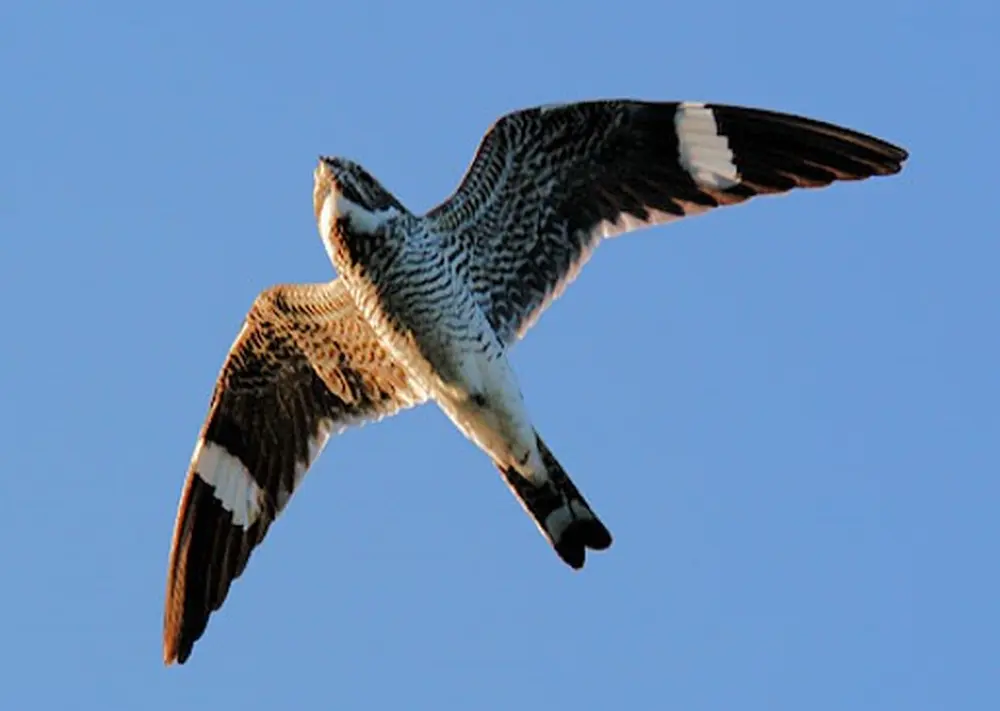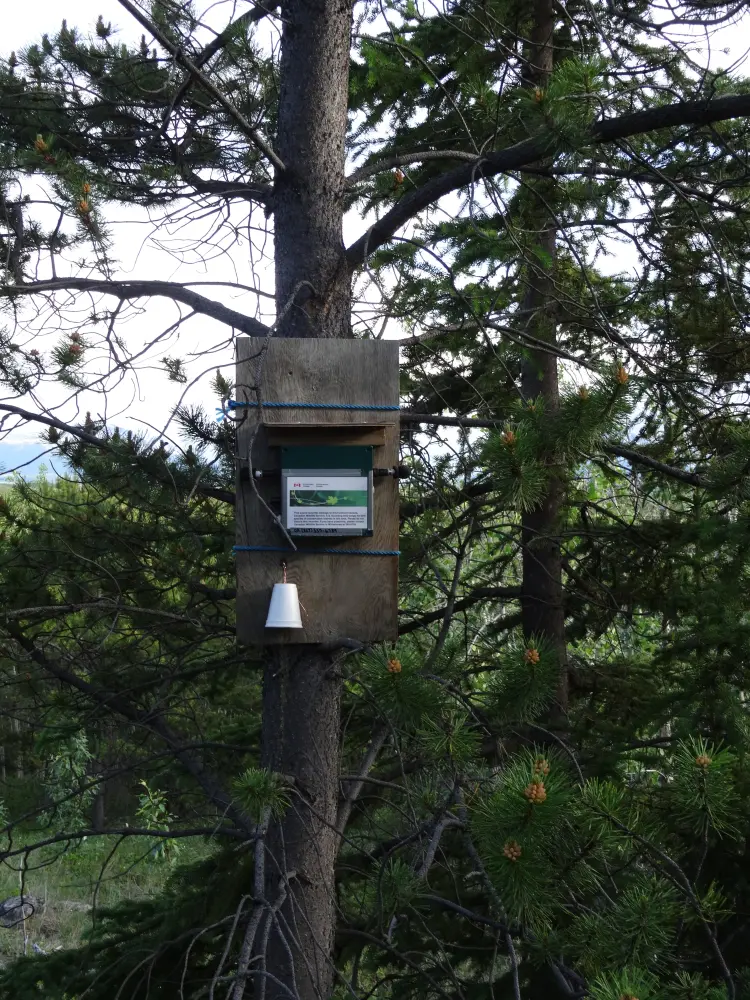
Your Yukon NightHawks
This article was originally published in The Preserve Post newsletter in Spring 2016. More current information and contact for the regional project can be doing on WildResearch.
2 minute read –
Is it true, that the early bird gets the worm? Not always!

COIN male.
Credit: Anne Brigham
A group of highly camouflaged birds, called nightjars, spend their days resting, waking up just in time for sunset. These birds are most active during twilight – not actually early birds!
The Common Nighthawk, the Yukon’s only nightjar, can often be found feasting on insects above the YWP wetlands during those twilight hours.

Common nighthawk chicks July 7.
Credit: Andrea Sidler
You’ve likely heard the electric peent calls of nighthawks filling the air, or maybe observed their silhouettes circling high above. Perhaps you’ve witnessed the males’ aerial maneuvers as he protects a territory. He shows off his white wing-bars to potential mates while performing spectacular dives toward the ground, pulling up at the last minute, and creating a mechanical “booming” sound with his wings.

A sound recorder mounted to a tree with some information for a, human passerby. Credit: Andrea Sidler
In the Yukon, we are lucky we get to experience these unique birds. It is not like this everywhere. In fact, Canadian populations have declined by over 50% in just 30 years (status: Threatened). As a species, nighthawks are poorly understood, particularly here, on their boreal forest breeding grounds.
By using remotely recording sound meters, Canadian Wildlife Service investigated how the Norths’ perpetual daylight influenced the timing of nighthawk activity. For two summers, the YWP was home to recorders which, each night, recorded the calls of resident populations. During June, nighthawks were most active around 2:00 am. However, by the end of July, as true night returned to the YT, this changed.

A well camoflauged female.
Credit: Andrea Sidler
There were two activity peaks, one at dawn (4:00 am) and one at dusk (11:30 pm) –similar to southern populations – demonstrating that nighthawks are indeed affected by the changing day-length!
We are trying to learn more about what landscapes our nighthawks use. To help address this, WildResearch is expanding their nighthawk surveying program to the Yukon this summer. WildResearch relies on the collective power of volunteer citizen scientists to conduct surveys (2-3 hrs), which contribute data to conservation efforts. If you’re interested in getting involved contact your regional coordinator. Find out who that is by visiting the WildResaearch site.

Andrea Sidler
Guest Researcher / Author

0 Comments